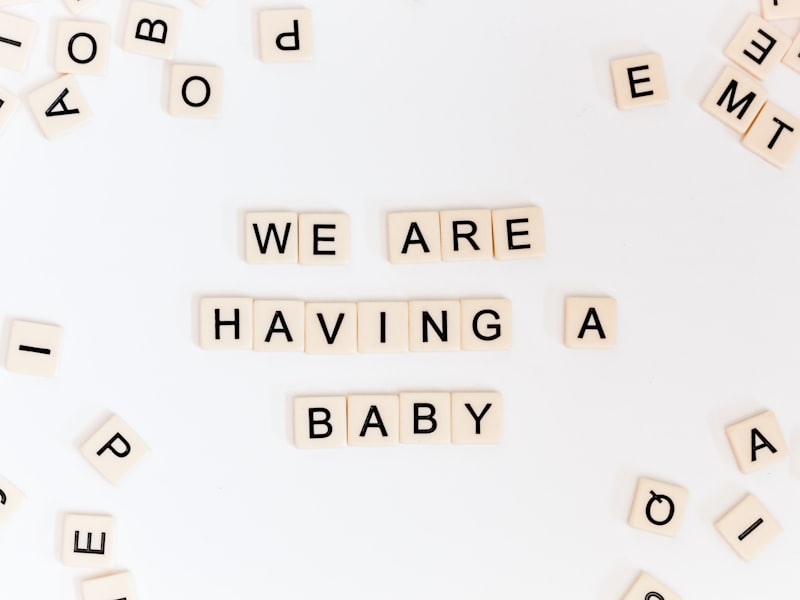
Next, check for non-toxic materials. With all the hype around eco-friendly products, it’s tempting to grab those bright, colorful toys, but make sure they’re free from harmful chemicals like BPA and phthalates. Look for labels or certifications from trustworthy organizations to ensure the toy is safe.
Another critical factor is durability. Babies can be surprisingly strong, so a toy that breaks easily can become a safety hazard. Opt for toys made from robust materials that can withstand some serious teething and rough play. It’s like choosing a sturdy umbrella for a stormy day—you need something that won’t give out at the first gust of wind.
Also, consider the design of the toy. Avoid toys with sharp edges or small detachable parts. Even though it might look like a cute, plush teddy bear, make sure all the components are securely stitched. Think of it like making sure a book has smooth, rounded corners before handing it to a toddler—safety first!
Lastly, stay informed about product recalls and reviews. It’s always wise to do a quick check online to see if a toy has been flagged for safety issues. Keeping up with the latest safety guidelines and updates ensures you’re giving your baby the safest play experience possible. So, while shopping for toys, think of it as assembling a little fortress of safety for your child’s playtime adventures.
2024’s Guide to Safe Baby Toys: What Parents Need to Know
One key factor to keep in mind is the age appropriateness of the toys. Toys designed for older children often come with small, detachable parts that can pose risks to younger babies. Think of it as a safety net: choosing age-appropriate toys is like making sure your baby’s playground is well-padded and secure.
Also, check for certifications from safety organizations. Look for labels from groups like ASTM or EN71, which ensure that the toys meet rigorous safety standards. This is your assurance that the toy isn’t just cute but also safe.
Let’s talk about materials—wood, fabric, and silicone are often great choices. They’re sturdy, and when they’re sourced responsibly, they can be safer for babies to interact with. Avoid toys with questionable finishes or paints, which might contain harmful chemicals.
Finally, consider the design of the toys. Rounded edges and sturdy construction are important features to look out for. They reduce the risk of injuries and ensure that the toy can withstand the rough and tumble play of curious babies. So, next time you’re shopping for your little one, think of safety as your ultimate guide—making sure every toy is as safe as it is fun.
Top Safety Tips for Choosing Baby Toys in 2024: A Parent’s Checklist
First off, size matters—literally. Opt for toys that are larger than your baby’s mouth. Small parts can pose a choking hazard, so go big or go home. Think of it like picking out a jacket that’s just the right size; you don’t want anything too tight or too loose. Next up, materials are key. Avoid toys made from harmful chemicals like phthalates or lead. Look for those labeled as BPA-free or non-toxic. Imagine buying a toy that’s like a food ingredient—you’d want it to be as clean and healthy as possible.
Another crucial tip is to ensure that toys are sturdy and well-constructed. Toys that can break easily might become dangerous with sharp edges or small pieces. It’s like choosing furniture for your home; durability is non-negotiable. Always check for any loose parts or seams that could potentially come apart.
Lastly, consider the age recommendations on the toy packaging. These are not just suggestions—they’re safety guidelines. A toy designed for a 3-year-old might not be suitable for a baby, so always stick to age-appropriate choices.

So, while the world of baby toys in 2024 is thrillingly diverse, keeping these safety tips in mind can help you make informed choices. Your little one’s playtime can be both safe and delightful with a bit of thoughtful selection!
How to Avoid Common Pitfalls When Selecting Baby Toys This Year
First off, let’s talk safety. It’s not just about avoiding sharp edges or choking hazards; it’s about choosing toys made from non-toxic materials. Your little one is likely to put everything in their mouth, so look for toys labeled as BPA-free and free from harmful chemicals. Think of it like choosing food for your baby—if it’s not good enough to eat, it’s not good enough to play with.
Next, consider developmental milestones. Babies are like sponges, soaking up new skills every day. Choose toys that align with their age and abilities. For instance, rattles and soft blocks are great for infants who are learning to grasp and shake. As your baby grows, they’ll need toys that challenge their fine motor skills and cognitive abilities, like shape sorters or stackable rings.
Also, think about versatility. Toys that grow with your baby are a win-win. For example, a toy that can be used for different activities or that adapts as your baby develops is not just a great investment but also a space saver. It’s like having a Swiss Army knife in the world of toys—one tool, many functions.
Lastly, avoid the allure of flashy, high-tech gadgets. Simple, classic toys often engage babies more effectively than those with bells and whistles. Sometimes, the best toys are the ones that encourage imagination and interaction, like a set of colorful blocks or a cozy stuffed animal.
The Ultimate 2024 Safety Standards for Baby Toys: What’s New?
First off, new materials are leading the charge. The 2024 standards mandate that all baby toys must be free of toxic chemicals like phthalates and lead. Imagine your child’s toy as a well-guarded fortress, now fortified against harmful substances. This shift ensures that the plastic or fabric your baby chews on is completely safe.
But that’s not all. Enhanced testing protocols have been introduced. Toys now undergo more rigorous stress tests to ensure they can withstand the rough and tumble of playtime without falling apart. Think of it like giving a toy a superhero suit—it’s designed to endure and keep your baby safe.
Another significant change is the emphasis on small parts. The new standards require that toys with detachable parts be designed to prevent choking hazards, even if a piece somehow comes loose. It’s like having an invisible safety net that catches any potential danger before it reaches your little one.
Finally, there’s a push for clearer labeling. Toy packaging now includes detailed safety warnings and age-appropriate guidelines. It’s akin to having a personal guide on the toy box, steering you away from any pitfalls.
These advancements reflect a growing commitment to child safety, ensuring that every toy in your baby’s collection is as secure as it is fun. So next time you’re shopping for toys, you can breathe a little easier knowing these enhanced standards are in play.
Expert Advice: How to Ensure Your Baby’s Toys Are Safe in 2024
First off, always check for certification marks. Just like you wouldn’t trust a car without safety ratings, don’t settle for toys that don’t have the right certifications. Look for labels from recognized safety organizations like the ASTM or CE. These symbols are like a stamp of approval, ensuring the toy meets strict safety guidelines.
Next, think about the materials used. In 2024, many parents are leaning towards eco-friendly options that are free from harmful chemicals. Opt for toys made from non-toxic, BPA-free plastics or natural materials like wood and cotton. Remember, a toy should be as kind to your baby’s environment as it is to their health.
Also, check for small parts. Even if a toy looks harmless, small pieces can be a choking hazard. This is especially crucial for babies who are in the “everything goes in the mouth” phase. A good rule of thumb is the toilet paper roll test—if a toy or its parts fit inside a roll, it’s too small for infants.
Durability is another factor to consider. Babies are experts at testing the limits of their toys. Ensure that the toys are well-made and won’t break into sharp or small pieces easily. Durable toys are like the sturdy friends who can handle a little roughhousing without falling apart.
Lastly, always read the age recommendations on the toy’s packaging. They’re there for a reason—matching the toy to your baby’s developmental stage helps avoid risks associated with inappropriate toys. So, keep these tips in mind and you’ll be on your way to creating a safe and fun play environment for your baby.
Frequently Asked Questions
How Can I Identify Toxic Materials in Baby Toys?
To identify toxic materials in baby toys, check for safety certifications from reputable organizations, review ingredient lists for harmful substances like phthalates or lead, and ensure the toy is free from small parts that could pose choking hazards. Opt for toys made from non-toxic, BPA-free materials and look for labels indicating compliance with safety standards.
What Features Make a Baby Toy Safe in 2024?
In 2024, safe baby toys are designed with non-toxic materials, no small parts that could pose choking hazards, and smooth, rounded edges. They should also be free of sharp edges and small removable parts. Toys must meet rigorous safety standards and undergo testing to ensure they are safe for babies to interact with.
How Do I Check for Recalls on Baby Toys?
To check for recalls on baby toys, visit the Consumer Product Safety Commission (CPSC) website and use their search tool. You can also check the manufacturer’s website or contact their customer service for recall information. Registering your toy with the manufacturer ensures you receive notifications about any recalls.
Are There New Safety Standards for Baby Toys This Year?
This year, updated safety standards for baby toys include stricter regulations on materials and manufacturing processes to ensure higher safety and quality. Manufacturers must comply with these new standards to enhance protection against potential hazards.
What Age-Appropriate Safety Guidelines Should I Follow?
Follow age-specific safety guidelines to ensure well-being. For infants, focus on choking hazards and safe sleep practices. For toddlers, secure sharp objects and use safety gates. For older children, teach them about online safety and safe behavior in various environments. Always adapt safety measures to their developmental stage.


